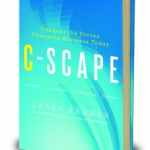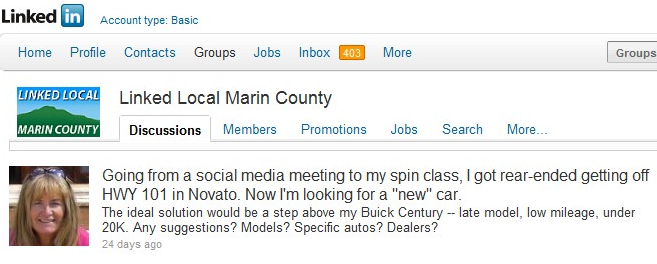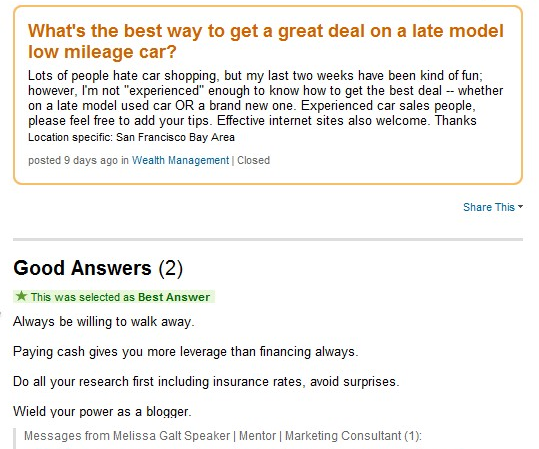 Q: Who needs a social media policy?
Q: Who needs a social media policy?
A: Any person with employees, independent contractors, and visitors who may use your business computer.
With more than one-third of the world’s population now online, it makes sense to have guidelines and procedures for cyber citizens to turn to — and if you are a business owner or manager, you are putting your enterprise at risk without a carefully drafted, communicated, and monitored Social Media Policy.
What exactly is a Social Media Policy?
Simply put, your organization’s Social Media Policy should set forth a listing of Do’s and Don’ts for online behavior. The best policies willdefine social media and describe your expectations of staff, independent contractors, collaborators, and, in fact, anyone who comes into the workplace and uses an organization’s computers. In a sense, the policy is a Code of Ethics for posting on the World Wide Web.
Is there a one-size-fits-all policy?
If only that was available! However, a 30-minute search on the internet will reveal hundreds of “model” policies from well-known companies [sources listed below] and dozens of tips for inclusion in a document that you can easily construct to address the particular needs of your individual business.
What are some of the key points to address in the internet usage guidelines for your organization?
1. State that the policy refers to all company employees and applies to multi-media, social networking sites, blogs and wikis for professional and personal use.
2. Make certain that information is a professional reflection of opinions and beliefs — avoiding abusive, racist, unethical remarks.
3. Think carefully before posting anything. Use common sense: do not post either proprietary company material or private information about yourself or co-workers.
4. Be honest about who you are and make it clear that views expressed are your own — and not that of the company unless you are authorized to speak for the organization.
5. Refrain from engaging in heated conversations or posting angry comments that attack individuals.
6. Endeavor to share accurate, factual information backed up with well-researched links or documents. Stick to your areas of expertise.
7. Use the internet to find out who is writing about your organization — both positively and negatively. Engage with both in a professional manner to build relationships and solve problems.
8. Understand copyright and respect copyright. Do not use the postings of other people without permission or acknowledgement.
9. Respect the privacy of offline conversations.
10. The company reserves the right to avoid certain subjects and remove inappropriate comments.
Here are links to databases including “model” social media policies:
154 Social Media Policies
57 Social Media Policies and Templates
Again, WHY do we need a Social Media Policy?
First and foremost, you need to protect your organization from inappropriate and possibly damaging communication on the computer. Your attention to possible online threats will address stakeholder fears and mitigate risk for both employers and employees — in addition to outlining what can and cannot be published on the internet. A well-constructed policy can become a tool for monitoring your online presence to build a stronger reputation — and a more successful business.
Here are some of the comments contributed by readers when this article was first published:
This is especially true in large and diverse companies, and even more so when they’re spread across different countries and cultures. The goal isn’t to constrain the employees, but to offer them helpful guidance and tips. — Posted by David Marutiak
* * *
I agree with you, companies practicing social media without a policy in place run a higher risk in damaging their brand image. — Posted by Sanjay Dmello
* * *
Great points! Given that the majority of online Americans are now members of at least one social network, and that everybody talks about work sometimes outside the job, it’s critical that companies have policies in place to provide guidelines for social media work in and outside the workplace. I recently wrote a blog post that may be helpful on how to develop a social media policy: http://webbiquity.com/social-media-marketing/how-to-write-a-social-media-policy/ — Posted by Tom Pick
Tom, I read your article and like it very much, especially the point that suggests:” If you don’t know, then ask.” Lots of people do say “It’s easier to ask for forgiveness than permission,” but I don’t think that’s a particularly wise idea when you can damage a company’s reputation. — Shari
* * *
My organization is amending our acceptable use policy to include social media. It’s unfair to expect associates to read minds – it’s important to clearly spell out what is and is not appropriate within the social media environment. I’ve also found in our discussions that clearly illustrating who can/cannot use social media within the office environment is very important. What about personal email? Facebook posts during the lunch hour? It’s crucial to spell it all out, especially in a company with thousands of employees across multiple locations. — Posted by Maureen (Kaiser) Richmond, APR
* * *
Actually there are already two documents almost everywhere – confidential agreement and PR-policy. Whith responsibility measures. Why create one more document to add it to other regulations? — Posted by Natalia Gurova
* * *
Not only your business needs a social media policy, but more importantly it has to build an in-house social media team, with clear objectives AND strong focus. Otherwise, an immense amount of time and resources will be wasted! — Posted by Nikolaos Bonatsos
* * *
Yes, absolutely. Having a social media policy is necessary for the reputational sustainability. This means that all stakeholders and targeted followers are consciously involved in the social promotion of the business brand(s). — Posted by Jawad Aarji
* * *
I don’t see this as simple at all. What’s an “abusive” remark? Rather like obscenity, I suppose I know it when I see it, but it’s very difficult to objectively define — and there are First Amendment concerns that must be addressed. Surely, a Carl Paladino-style email is out of bounds, but what of an expression of opinion at variance with a corporate legislative objective, which later turns up in a blog or newspaper? Slippery slope, no??? — Posted by Mike Collins
Mike, I’ve heard one company’s policy is simply “Use Common Sense.” I suspect that common sense is more difficult to describe than obscenity.– Shari
* * *
Good point. That’s why when I present on this topic I draw a distinction between “shoulds and shouldn’ts” and “musts and mustn’ts.” For example, an offhanded remark on a social media site along the lines of “my coworker in the next cube is a real idiot” would be something you shouldn’t say, but it’s not a fire-able offense. On the other hand, revealing trade secrets or non-public financial numbers may very well be cause for termination. Employees need to understand, and therefore the policy needs to explain, such distinctions. — Posted by Tom Pick
* * *
Social media is sure to grow and yes, it’s vital companies have some kind of protocol for its usage. I know one company in London that prohibits use of conversation sites between certain peak working houre ie between 9am-1pm then 2pm-5pm. I know I’d be a concerned if a colleague was on social media sites when I needed them to call clients and get invoices paid! — Posted by Esther Porta
* * *
I think that when you are a business and you want to harness the power of social media, you really need to put 3 things into place: a strategy (why, how, goals and using what), a social media policy (to “protect” employees and the company from doing something stupid without knowing it) and social media monitoring (what is being shouted at your social media profiles; being said about you and your brand; the market including competitors, etc.)
I think leaving out one of these three will result in poor results and possibly failure. However, implementing all three will require manpower, time and money which a lot of businesses are not willing to invest since social media seems to be “free”.
Another major items that is forgotten is to inform ALL your employees of what social media is and can do (positive and negative). Just take a look at most blunders, they are not made by marketeers but other people on the factory floor or office. They have no idea what the dangers are.
Finally, I strongly believe in presenting the social media policy in a face-to-face format to ALL employees so they know it exist and know what it entails. So often I ask (even marketeers) if they know where the policy is and they can not find it back. Anyway only 1 in 4 companies has a policy.
If you want more info, I am always open to discuss more — Posted by Mic Adam
* * *
Social media policies should be set so people know what is considered unacceptable to the company brass. (Those posts also play a part in the person’s personal brand.) My rule is that if you don’t want others to repeat it to anyone and if you don’t want it to trend in traditional and electronic media, don’t post it!
Therefore, if you’re want to criticize a person, policy or company, do it in the privacy of your own home — if the person listening can be trusted not to share it, of course! – Posted by Gail Sideman
* * *
[These comments posted on original article published on CompuKol.com: http://compukol.com/blogs/compukol/social-media-policy-why-your-business-needs-one/]
Still looking for examples of great Social Media policies? Here are 100 to choose from.
Sadly enough, research shows that two out of three organizations have no social media guidelines at all. Is your company one of them?
 The subject of turning down new business has “hit a nerve.” So many people have weighed in on this topic that I wanted to share as many opinions as possible — hence this series, which began with Saying NO to a new client may be your Best Business Move. My friend Mike Van Horn, whom I met at Bay Area Consultants Network [BACN], responded to the article submitted as a Discussion Topic in the BACN LinkedIn group. His comment began with these words:
The subject of turning down new business has “hit a nerve.” So many people have weighed in on this topic that I wanted to share as many opinions as possible — hence this series, which began with Saying NO to a new client may be your Best Business Move. My friend Mike Van Horn, whom I met at Bay Area Consultants Network [BACN], responded to the article submitted as a Discussion Topic in the BACN LinkedIn group. His comment began with these words:
















